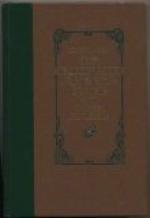|
This section contains 5,511 words (approx. 19 pages at 300 words per page) |

|
SOURCE: "The 'Jumping Frog' as a Comedian's First Virtue," in Modern Philology, Vol. 40, No. 3, February, 1963, pp. 192-200.
In the following essay, Baender argues that although Twain's jumping frog story borrows conventions of the Southwestern frame story, the sketch is a creative departure from that traditional form. Baender points out that the tale includes many anecdotes that are clearly the author's own invention, and that it has national rather than regional appeal.
Mark Twain criticism is still violent and unsettled. Ever since the 1860's people have fought as to whether he was more than a humorist or only a humorist, civilized man or frontiersman, and more recently, conscious or unconscious artist. These issues have not been decided, and by the nature of their customary formulation they cannot be. No matter how refined the psychological, aesthetic, or ideological arguments, they have failed to produce their intended empirical settlement because they...
|
This section contains 5,511 words (approx. 19 pages at 300 words per page) |

|


